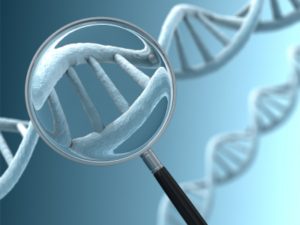The DNA Difference: Church Plant vs. Multisite
A lot has been said in recent years about two specific strategies to reach more people for Christ. Church planting and, for lack of a better word, multi-siting. Both have been used successfully to expand the kingdom of God, reach people for Christ and disciple new believers. Both are good approaches. But there is a fundamental difference between a church plant and a multisite. The difference is in the DNA.
What is DNA?
Simply put, DNA is the carrier of genetic information used in the growth and development of living organisms. In humans, DNA contains the molecular building blocks that make us who we are. In churches, also living organisms, DNA is the foundational information that makes the church what it is. It’s the beliefs, values, purpose, mission and unwritten rules that govern how a church operates. DNA is important. It makes humans who we are. It defines churches and determines who they are.
Cloning
Not long ago I watched an interesting documentary on the cloning of Argentinian polo horses. Apparently, it’s a common practice. The league’s premier jockey, Adolfo Cambiaso, became famous not just for his skills as a champion polo player, but also for his successful business of cloning horses. His best horse, Cuartetera, has been cloned many times and in December, 2016, those clones helped him and his team win the country’s most prestigious polo match at Palermo.
When traditional horse breeders decide it’s time to raise more horses, DNA from each parent comes together resulting in a new foal being born. The newborn has a combination of both parents’ DNA. But when breeders who use cloning technology decide to create more horses they use the DNA from a single source, typically from a strong, successful male horse. The result is a newborn with the DNA of just one parent.
I’m certainly not advocating the cloning of any living animal. I think it’s probably best to let animals multiply the way God designed it. But when put into the context of church multiplication, “cloning” of DNA can have many benefits.
The DNA Difference
Much like horse breeders, when a religious organization decides it’s time for a new church, two things can happen. In a church plant, the DNA from the sending organization combines with the DNA of the church planting pastor. The result is a new, baby church with a combination of DNA from two parties.
In a multisite, the new venue or campus typically has the DNA of just the original church. While the Campus Pastor usually champions the vision, values, purpose and mission of the new site, they originated from the “parent” congregation alone.
Simply put, combining DNA results in a more varied outcome. Cloning DNA produces a more similar outcome.
Pros & Cons
Depending on your desired result, either approach can have its advantages. A church plant allows for more flexibility. Every church and every environment is different, so having DNA from a broader perspective can allow a church planting pastor the freedom to tailor ministry to the specific context. This is a good strategy if the church plant is in a different social, economic or cultural environment than the sending organization.
On the other hand, a multisite gives greater structure. The Campus Pastor can rely on proven, effective strategies and simply cast vision around the DNA that is already in place. This is a good approach if the parent church has a strong leadership culture and healthy internal systems it wishes to reproduce in a similar culture as the new, multisite venue.
Either way, the DNA of a church has vital significance and it’s well worth careful consideration when seeking God’s wisdom on how to best expand His kingdom. Remember, you will produce what you are. It’s just a matter of how broad or how narrow you want your DNA source to be, and how much freedom or structure you feel will best accomplish your goal.
